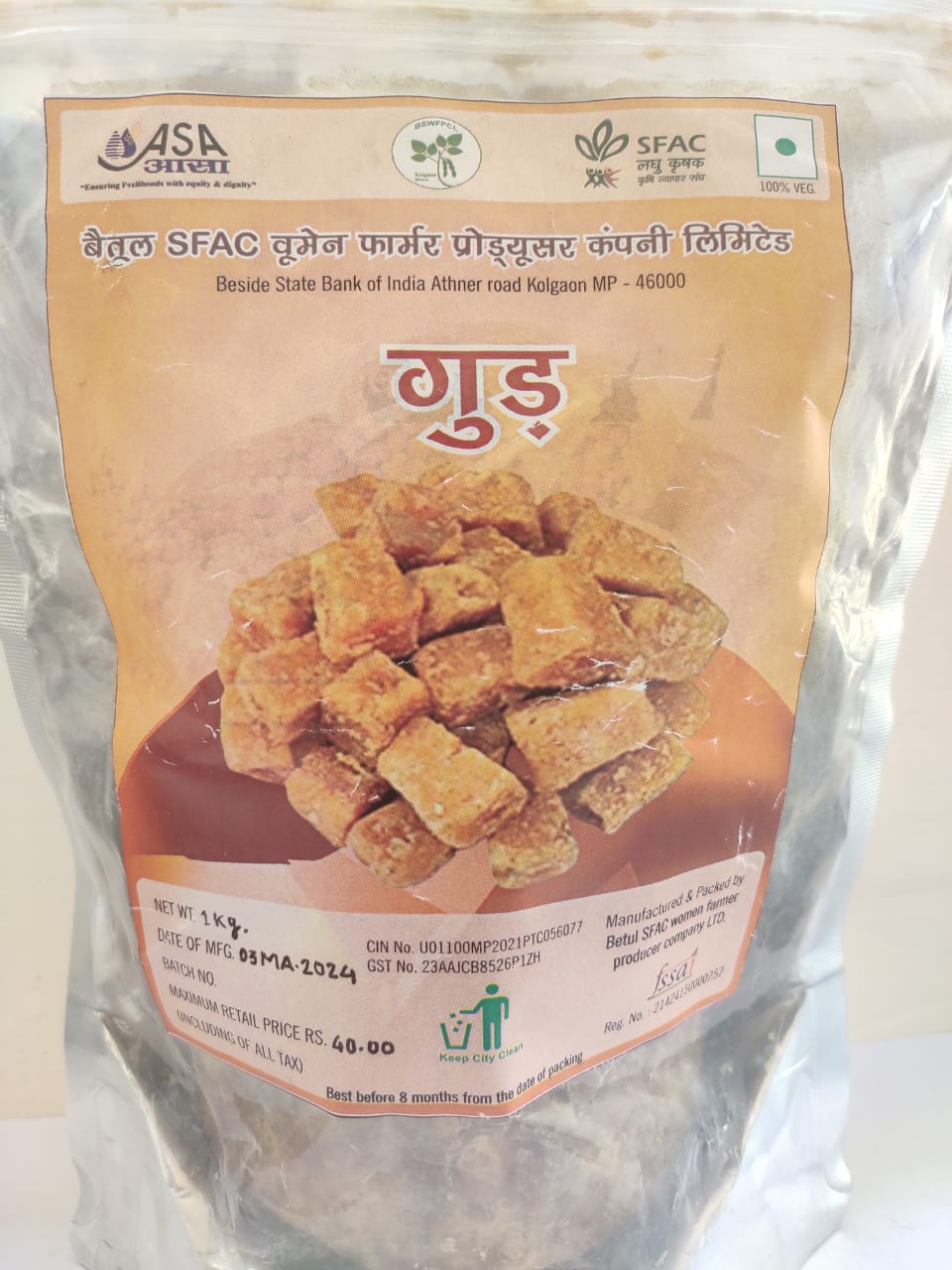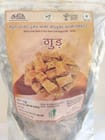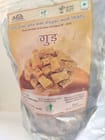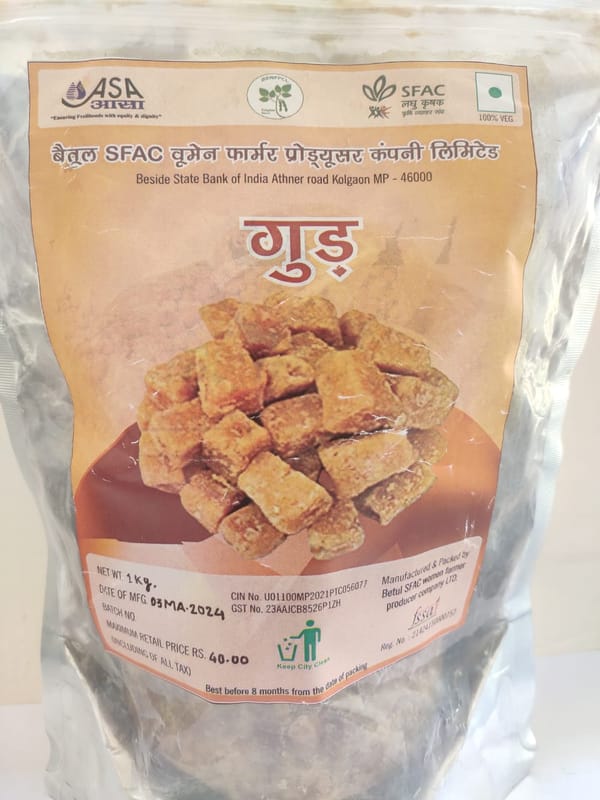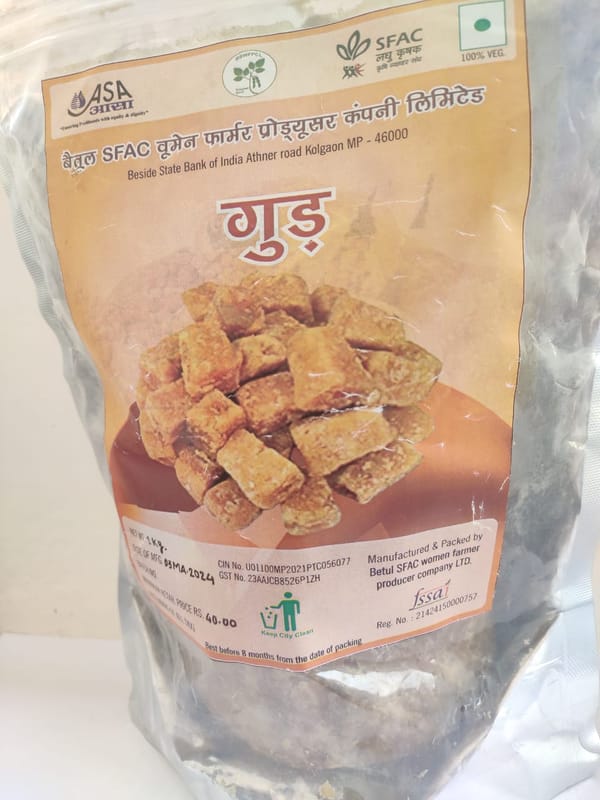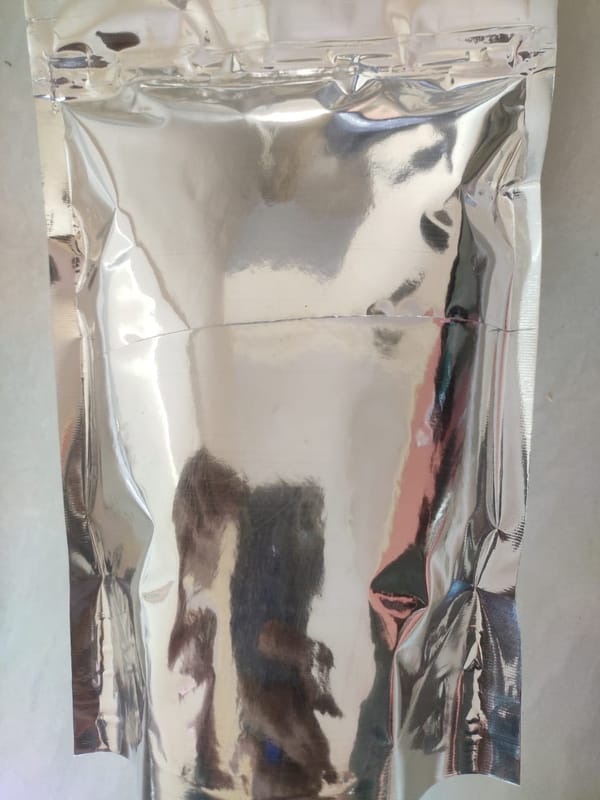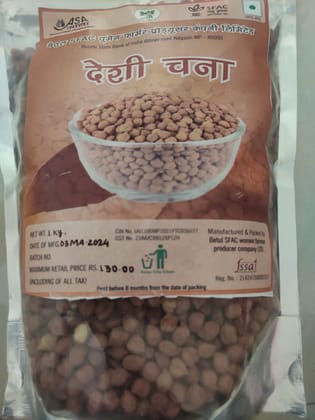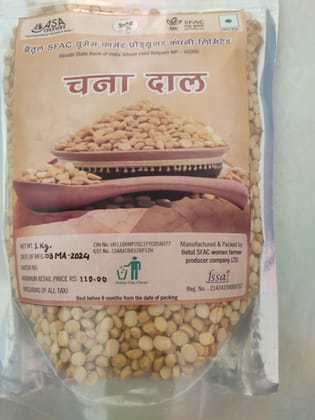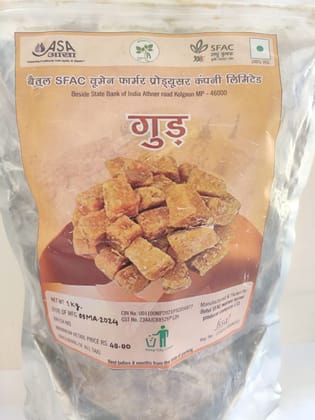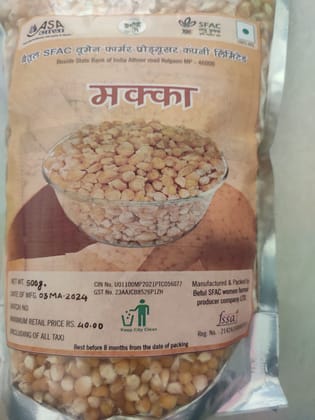Jaggery (Gud)
Veg
Key Attributes
| Country of origin | India |
|---|---|
| Net Quantity | 1000 gram |
| Manufacturer or packer name | Betul SFAC women Farmer producer company LTD |
| Country of origin | India |
|---|---|
| Common name | Gud |
| Net Quantity | 1000 gram |
| Additive info | As a minimally processed natural sweetener, jaggery (gud) typically does not contain additives in its pure form. However, commercially packaged jaggery products or jaggery-based products such as candies, syrups, or confections may sometimes contain additives for various purposes. Here are some common types of additives that may be associated with jaggery products: Preservatives: Additives such as sodium benzoate or potassium sorbate may be added to jaggery-based products to extend their shelf life by inhibiting the growth of mold, yeast, and bacteria. Colorants: While natural jaggery has a characteristic brown color, some processed jaggery products may contain added colorants to enhance their appearance or maintain consistency. These colorants could be natural colors derived from sources like caramel or synthetic food dyes. Flavor Enhancers: Additives like artificial or natural flavorings may be used to enhance the taste and aroma of jaggery-based products, providing a specific flavor profile or masking any off-flavors. Anti-caking Agents: In powdered or granulated jaggery products, anti-caking agents such as silicon dioxide or calcium silicate may be added to prevent clumping and ensure uniform flow. Emulsifiers: Emulsifying agents like lecithin may be included in jaggery-based products to improve texture, prevent separation of ingredients, or enhance mixing properties, particularly in products like jaggery syrups or sauces. Acidulants: Acidulants such as citric acid or tartaric acid may be used in jaggery-based products to adjust the pH for flavor enhancement, preservation, or to achieve desired acidity levels. Stabilizers and Thickeners: Additives like xanthan gum or guar gum may be used to stabilize and thicken jaggery-based products such as candies, syrups, or sauces, improving their texture and mouthfeel. Sweeteners: In jaggery-based products like candies or confections, additional sweeteners such as refined sugar, high-fructose corn syrup (HFCS), or artificial sweeteners may be added to adjust sweetness levels or reduce costs. It's important to read the ingredient label carefully when purchasing jaggery products to identify any additives or preservatives present, especially if you have specific dietary restrictions or preferences. Opting for minimally processed or homemade jaggery products can help minimize exposure to additives and ensure a more natural and wholesome product. |
| Weight | 500 g |
| Food type | veg |
| Manufacturer or packer name | Betul SFAC women Farmer producer company LTD |
| Manufacturer or packer address | Beside State bank of India Athnet road kolgoan |
| Manufacturing Date | 03/2024 |
| Nutritional information | Jaggery, also known as "Gud," is a natural sweetener made from sugarcane juice or palm sap. It is often considered a healthier alternative to refined sugar due to its minimal processing and higher nutrient content. Here's a general overview of the nutritional information for jaggery per 100 grams: Calories: Approximately 383 calories Carbohydrates: Around 97 grams Sugars: Approximately 97 grams (mostly sucrose) Protein: About 0.4 grams Fat: Approximately 0.1 grams Dietary Fiber: Around 0.6 grams Minerals: Iron: Approximately 11 milligrams Calcium: Around 40 milligrams Magnesium: Approximately 70 milligrams Potassium: Around 1050 milligrams Phosphorus: Approximately 20 milligrams Sodium: Around 20 milligrams Zinc: Approximately 0.2 milligrams Copper: Around 0.18 milligrams Vitamins: Vitamin C: Approximately 1 milligram Thiamin (Vitamin B1): Around 0.01 milligrams Riboflavin (Vitamin B2): Approximately 0.05 milligrams Niacin (Vitamin B3): Around 0.3 milligrams Vitamin B6: Approximately 0.1 milligrams Folate (Vitamin B9): Around 3 micrograms Nutritional Benefits: Iron: Jaggery is particularly rich in iron, making it a valuable dietary source for individuals at risk of iron deficiency or anemia, especially pregnant women and menstruating individuals. Calcium and Magnesium: Jaggery contains calcium and magnesium, which are essential for bone health, muscle function, and overall well-being. Potassium: Potassium in jaggery plays a crucial role in regulating blood pressure, maintaining electrolyte balance, and supporting heart health. Antioxidants: Although the antioxidant content in jaggery varies depending on factors such as processing and storage, it may contain antioxidants that help neutralize harmful free radicals in the body. Slightly Lower Glycemic Index: Jaggery has a slightly lower glycemic index compared to refined sugar, which means it may cause a slower and more gradual increase in blood sugar levels, making it a preferable option for individuals with diabetes when consumed in moderation. Trace Vitamins: Jaggery contains small amounts of various vitamins, including vitamin C, thiamin, riboflavin, niacin, vitamin B6, and folate, although the levels are relatively low compared to other nutrients. While jaggery offers certain nutritional benefits compared to refined sugar, it's essential to consume it in moderation as part of a balanced diet. Despite its nutrient content, jaggery is still high in calories and carbohydrates, so excessive consumption can contribute to weight gain and other health issues. |
| Instructions | General instructions for using jaggery in cooking: Selection and Storage: Choose good quality jaggery that is free from impurities and has a uniform color. Store jaggery in an airtight container in a cool, dry place away from direct sunlight to prevent it from becoming too sticky or attracting moisture. |
| contact details consumer care | BETUL SFAC WOMEN FARMER PRODUCER COMPANYLIMITED, [email protected] |
